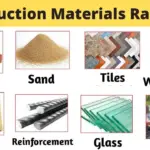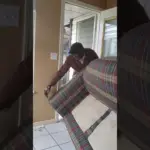Low water pressure can be a frustrating issue that affects your daily life and the functionality of your home. From sluggish showers to inefficient washing machines, it’s a problem that can disrupt your routines and lead to potential plumbing complications.
In this comprehensive guide, we’ll explore the common causes of low water pressure and offer practical solutions to ensure your home’s water pressure is optimal.
Let’s dive into the world of plumbing and find out how to restore strong, consistent water pressure.
- Clear the Clogs
- Clean or Replace Corroded Plumbing
- Seal the Leaks
- Repair or Replace Faulty Fixtures
- Replace Pressure Regulator
- Install a Booster Pump

Different types of low-pressure water issues
Water pressure issues can be a frustrating inconvenience for homeowners, but they don’t have to be a permanent nuisance. Below, we’ll explore how to address common water pressure problems that can arise in your home’s plumbing system.
Low Pressure at Individual Plumbing Fixtures
When low water pressure affects a single fixture, you might be able to resolve the issue yourself, depending on the cause. If a faucet is affected, follow these steps:
- Remove the aerator and thoroughly clean its mesh screen to remove any sediment particles.
- If limescale has built up on the aerator, soak it in a 50–50 vinegar/water solution for 15 to 20 minutes. If the scale doesn’t dissolve, consider replacing the aerator.
- For a clogged showerhead nozzle, you can also use the same cleaning procedures.
- If these steps don’t improve the water pressure at the fixture, it’s advisable to consult professional plumbers to inspect the water lines for potential partial blockages.
Hot Water Pressure Problems
If you’re experiencing inadequate water pressure only in the hot water supply throughout your home, the likely culprit is sediment accumulation in the water heater lines and tank.
If the water heater tank hasn’t been regularly flushed, this buildup can obstruct the pressure relief and drain valves. To address this issue effectively, it’s best to have your water heater inspected and serviced by an experienced plumber.
Also Read: Sewer Camera Inspections: Costs, Solutions & More
House-Wide Low Pressure
When low water pressure affects every fixture in your home, follow these steps:
Like Us on Facebook!
- Check that your main water valve is fully open. If it is, and you still have low pressure, it’s time to contact a reputable plumber for a thorough investigation.
- Low neighborhood water pressure might be the cause, requiring the installation of a booster for your home’s water supply.
- There could be a leak in your main supply line, necessitating immediate repair.
- Your plumbing system might have a reducing valve that requires attention.
- Your galvanized piping could be corroded, or there might be a scale and sediment buildup in your water lines. These issues would need professional assessment and action.
Also Read: Complete Comfort Plumbing
Subscribe Us on YouTube!
Clear the Clogs: Restoring Flow
One of the leading culprits behind low water pressure is the accumulation of mineral deposits in your plumbing system. This buildup, often exacerbated by hard water, can significantly hinder water flow.
Signs of low water pressure in your faucets are usually clear indicators that clogs may be present.
To address this issue effectively, it’s essential to enlist the expertise of a skilled plumber.
They will locate the clog’s precise location and determine whether repair or replacement of the affected pipe is the best course of action.

Clean or Replace Corroded Plumbing: The Impact of Aging Pipes
Living in an older home with decades-old plumbing can lead to corrosion issues, especially with galvanized steel pipes.
These materials tend to corrode after approximately 20 years, potentially compromising your water pressure. Brass pipes have a longer lifespan, ranging from 40 to 70 years, while copper pipes can endure for 50 years or more.
Additionally, adding more plumbing fixtures to your home can increase the workload on your piping, accelerating the rate of corrosion.

If you suspect that corroded pipes are the root cause of your low water pressure, it’s vital to consult our team for a thorough assessment. We employ advanced tools to evaluate even hard-to-reach areas of your plumbing system, determining the extent of corrosion.
Addressing corrosion promptly is crucial to prevent issues such as cracks, major leaks, and water damage to your property.
Seal the Leaks: Preventing Wasted Water
Leaky pipes or water lines are another common culprit behind low water pressure. Small holes or cracks in your pipes divert water away from its intended destination, leading to reduced pressure at your faucets. Flooding in your basement or foundation may indicate the presence of leaks.
To check for leaks, turn off all taps in your home for about two hours and monitor the meter reading. An increase in readings may signify a leak. You can also visually inspect your plumbing for pooling water or wet spots.
Even if you identify one leaking pipe, there may be others hidden from view. Through video drain inspection, our experts can locate all leaks, enabling us to seal or replace the affected areas effectively and restore water pressure.

Repair or Replace Faulty Fixtures: Enhancing Efficiency
In some cases, low water pressure may be isolated to specific fixtures in your home. Faucets often have aerators that regulate water volume without compromising pressure.
Over time, these aerators can become clogged with rust, dirt, or mineral buildup. Showers may also suffer from clogs in their tiny holes. Faulty connections and seals on faucets can contribute to pressure problems as well.
Our professionals can assist in replacing clogged aerators or entire fixtures to improve water pressure. We can also recommend water treatment options to prevent future issues with faucets.
A water softener, tailored to your area’s water quality, can provide a permanent solution, ensuring consistent water pressure.
Replace Pressure Regulator: Maintaining Safe Levels
A pressure regulator in your home controls the water pressure entering your system, maintaining a safe level. Ideally, water pressure should remain at around 50 psi to prevent damage to your plumbing and appliances.
If your regulator fails, it can lead to pressure fluctuations that affect your daily tasks and stress your appliances, like washing machines and dishwashers.
Sediment buildup can cause blockages and regulator malfunction. To check your regulator’s performance, attach a pressure gauge to an outdoor hose spigot and compare the reading to the expected pressure.
If the regulator is faulty, our plumbing experts can assess your household’s needs and install a new regulator with the correct pressure settings.

Install a Booster Pump: Enhancing Water Flow
If you’ve thoroughly examined your plumbing and haven’t found an apparent issue, and your neighbors report similar problems, it may be time to consider installing a booster pump.
This device increases water pressure from your main supply line to your home’s plumbing system, providing a reliable solution for consistent water pressure.
Our experienced plumbers can install a booster pump tailored to your home’s specific needs, ensuring your water pressure remains at an optimal level.

What is the most common cause of low water pressure?
Outdated Fixtures
Low water pressure in homes is frequently caused by outdated fixtures. Aging galvanized steel water pipes can corrode, severely restricting water flow. Accumulation of mineral deposits like sediments and limestone can also obstruct fixtures, impeding the free flow of water.
While the corrosion may occur inside the pipes, you can often detect it by a gradual decrease in water pressure. This problem typically develops over several years, but in homes with outdated pipes, it may manifest sooner.
Faulty Pressure Regulators
Pressure regulators, responsible for maintaining safe pressure levels in your plumbing system, can fail or become clogged, resulting in low water pressure or even pressure spikes. While you can replace a pressure regulator yourself, it’s advisable to consult a professional technician who can assess the issue and either repair or install a new one.
Water Valves
Your home typically has two primary shut-off valves controlling water flow: one at the meter and the other inside your home.
Partial or complete closure of these valves can lead to reduced water pressure. After a temporary water shutoff, one of the valves may inadvertently remain partially closed. To address low water pressure due to closed valves, ensure both main valves are fully open.
Clogged Water Pipes
If you notice your faucet initially providing normal pressure, then rapidly losing pressure, your water pipes may be clogged. Over time, rust, mineral deposits, and other debris accumulate inside pipes, restricting water flow.
Galvanized pipes are particularly susceptible to this issue, which is why they are no longer commonly used for new installations. Clogging materials can include sand, water minerals, pollutants, and dirt, entering your pipes through sinks or small cracks.
Shared Pipelines
Shared pipelines, supplying water to multiple houses, can lead to reduced water pressure when neighbors simultaneously use water.
While more common in apartments, shared well lines in individual homes can also result in this issue. Adjusting your water usage habits and timing may help mitigate the impact.
Leaking Pipes
Pipe leaks can significantly decrease water pressure in your home. While larger leaks are easily noticeable, smaller leaks that occur intermittently when water is not constantly running, such as from a garden hose or washing machine drain, may be harder to detect until they worsen.
Leaking pipes are often concealed behind walls or under floors. You can identify intake pipe leaks by checking your water meter, which will indicate a leak if it runs when no water is in use.
Corroded Plumbing
Extensive corrosion within your home’s plumbing system can lead to a significant reduction in water pressure. Corrosion flakes can clog pipe joints, causing the problem.
Additionally, if branch lines in your plumbing system are too narrow due to previous fixture changes, you may experience reduced water pressure, even without corrosion. In such cases, the branch lines’ limited interior space restricts water flow.
Conclusion
Low water pressure in your home can disrupt daily routines and lead to potential plumbing issues. By understanding the causes and implementing the appropriate solutions, you can enjoy strong, consistent water pressure, enhancing your quality of life and preventing future problems.
Whether it’s clearing clogs, addressing corrosion, sealing leaks, or optimizing fixtures, our expert team is ready to help you restore your home’s water pressure to its full potential.
























